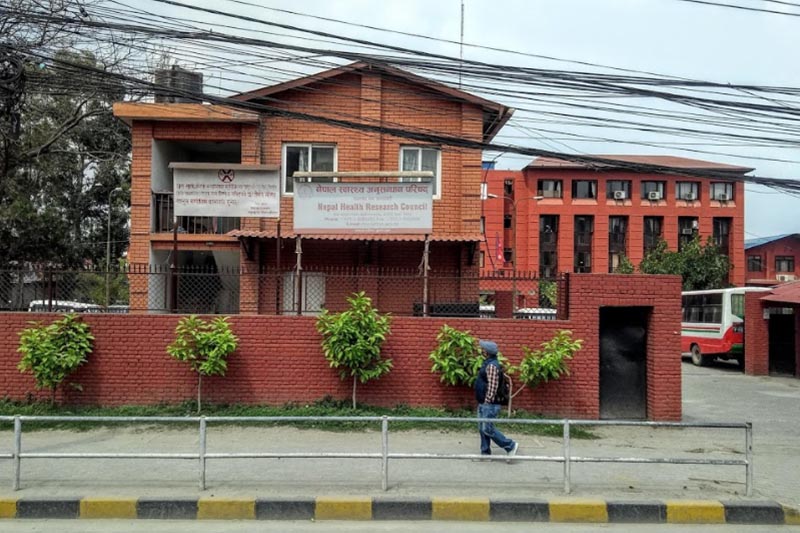Study reveals high prevalence of non-communicable diseases in Nepal
Kathmandu, August 4
The first national representative study on prevalence of selected chronic diseases in Nepal has revealed that there is a high prevalence of non-communicable diseases across the country.
A research conducted by Nepal Health Research Council, with support from the Ministry of Health and Population, has revealed that chronic obstructive pulmonary disease is the most prevalent (11.7 per cent), followed by diabetes mellitus (8.5 per cent), chronic kidney disease (6 per cent) and coronary artery disease (2.9 per cent) among Nepalis.
It reveals that males have higher prevalence of non-communicable diseases. Prevalence of diabetes is more in men than in females — 11 per cent and 6.7 per cent, respectively. Prevalence of chronic kidney disease in men is 6.5 per cent and in females it’s 5.7 per cent. Prevalence of COPD is more in men -- 12.6 per cent, compared to 11 per cent in women. However, the prevalence of possible, probable and definite coronary artery disease is comparatively higher in women (3.2 pc) than in men (2.4 pc).
The findings reveal that the use of tobacco, alcohol consumption, risk of COPD, raised blood pressure, raised blood glucose, abnormal lipids and body mass index have an association with increasing level of non-communicable diseases across the country.
Prevalence of diabetes is high in Province 3 (11.5 per cent) and urban areas (11.3 per cent). “There are more urban areas in Province 3. Physical inactivity, intake of junk food, obesity and urbanisation are some of the causes of higher prevalence of diabetes in these areas,” said Meghanath Dhimal, chief researcher at Nepal Health Research Council.
Karnali Province has the highest number of COPD cases. “Use of fossil fuels for cooking is high in the province. Smoke from the burning of biomass fuels is a major cause for higher prevalence of COPD in Karnali,” added Dhimal.
A population-based nationwide cross-sectional survey conducted from 2016 to 2018 used a multi-stage cluster sampling to select a representative sample of 13,200 from 400 clusters in 72 districts of Nepal.
Survey findings
Name of province
Diabetes Mellitus
Chronic Kidney Disease
Coronary Artery Disease (Prevalence of possible, probable and definite CAD)
Chronic obstructive pulmonary disease
Province 1
7.7
5.2
3
6.2
Province 2
8.5
6.6
2.8
16.4
Province 3
11.5
6.5
3
11.7
Gandaki Province
6.7
6.8
3.6
6
Province 5
9.6
5.7
2.3
9.5
Karnali Province
3.2
4.7
0.8
25.1
Sudurpaschim Province
5.2
5.9
3.6
14.3
Figures in per cent; Source: Nepal Health Research Council
The survey was conducted with the objective of determining population-based prevalence of selected non-communicable diseases — diabetes, coronary artery disease, chronic obstructive pulmonary disease and chronic kidney disease in people aged 20 years and above.
The research committee has recommended an effective health promotion and chronic disease prevention programme. It has also recommended a programme to curb use of tobacco and alcohol, focusing more on men. The panel also recommended blood sugar screening programmes on a larger scale.
The research committee recommended that special interventions be designed for women to help counter issues related to body mass, such as obesity, elevated waist-hip ratio and abdominal obesity, which have long term health implications.






